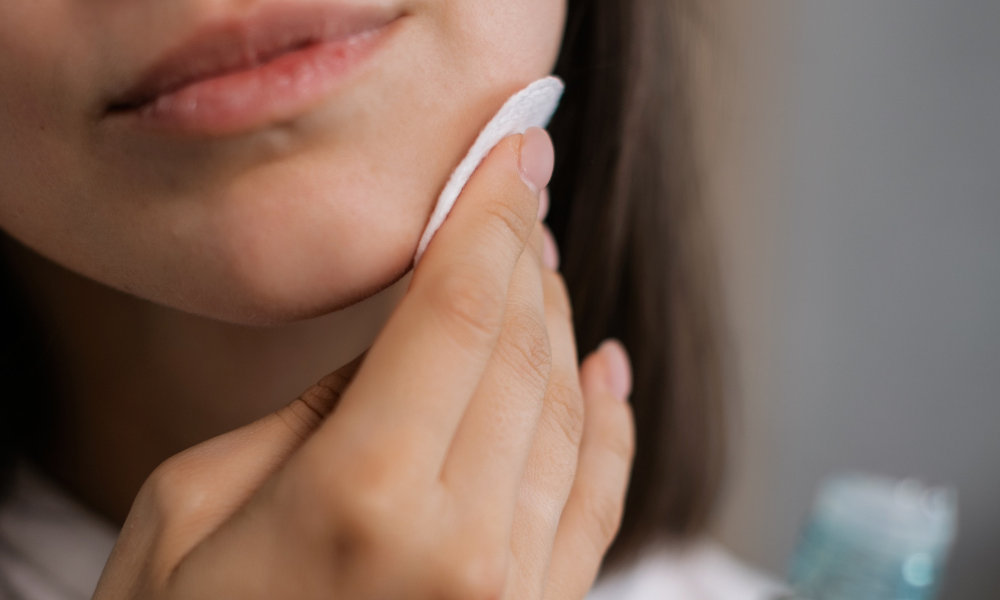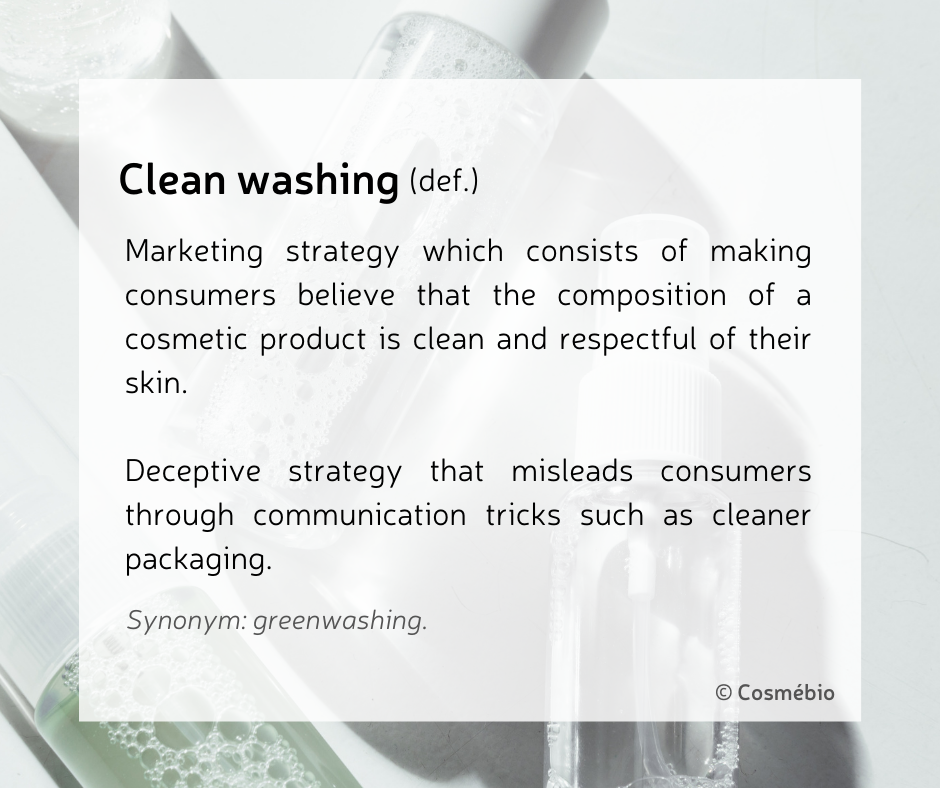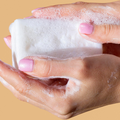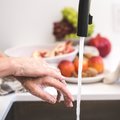Clean-washing: it slips right off the tongue!
For a trend that has really taken off and changed the cosmetics market, why would we have this idea that Clean Beauty blends so well with greenwashing? Read this article to get Cosmébio’s take on the matter.

Clean Beauty, what is it exactly ?
Clean Beauty at its origin was a noble concept
What do you think, is there some truth to this idea? Did the Clean Beauty trend start as something moral or was it just pure marketing from the start…it’s up to you to decide!
It’s been a few years now since the term “clean beauty” first appeared in the French beauty market. Yet, its true origin comes from the United States as a new marketing method promoting cosmetics that claim to be “clean” from undesirable ingredients. “Clean beauty”, as a claim, was being used by brands wanting to offer consumers products that have a more natural composition and use less unnecessary, or even dangerous ingredients.
This idea, which is noble in principle, owes a lot of its creation to the lack of American regulations for cosmetics. In the United States 🇺🇸, only about 10 ingredients are prohibited through cosmetic regulations, whereas in Europe 🇪🇺 we can count more than 1300 prohibited ingredients. One could say that the Clean Beauty trend is a result of this absence in regulation in the American market…
Despite the existence of stricter European regulations and an rigorous organic label for cosmetics, Clean Beauty has nevertheless found its place in the French market 🇫🇷.
When does Clean Beauty become Clean-washing?
The noble promises of Clean Beauty are quickly forgotten once the trend is used to trick the consumer by storytelling and other marketing tactics, never giving real proof to their supposed commitments. Seeing as the term “Clean Beauty” has no official definition in regulations, any brand can use it: brands that sell products filled with petrochemicals, brands that sell products with ingredients of natural origin but are not certified (therefore have a lack of traceability for their ingredients) and brands that offer cosmetics that are truly certified natural and organic.

Clean Beauty is a marketing claim with no regulation, nor certification*
*There is no official clean beauty certification in France.
The lack of an official definition and a true standard for Clean beauty has created confusion in the natural and organic cosmetics sector. It has become difficult to tell the difference between brands proclaiming Clean Beauty and brands accurately providing it. This has given illegitimate marketing power to brands that want to seduce the conscious consumer under false pretenses.
Examples where Clean Beauty has become Clean-washing:
Example number 1: A brand that has a baseline of « Clean Skincare » commercializes a product containing a number of synthetic ingredients as well as harmful ingredients forbidden from the COSMOS standard: Carbomer (synthetic, not easily biodegradable), Phenoxyethanol (irritant, toxic for the liver and blood) Sodium Hydroxymethylglycinate (formaldehyde liberator).
The second case that we would like to call out: A brand that uses a “Clean Beauty” label and proclaims to be “certified” Clean uses Sodium Cocoyl Isethionate (SCI) in its products. This ingredient is notably forbidden in organic cosmetics due to its polluting manufacturing process relying on « heavy industry ». It seems incredibly contradictory to proclaim something as “clean” when its contributing directly to environmental pollution and putting the workers' lives at risk.
Clean Beauty should be certified organic beauty
All certified organic COSMOS cosmetics (and labelled Cosmébio) are "clean" but not all cosmetics that claim to be "clean" are certified organic and are not necessarily "clean".
The absence of regulation and certification mentioned above has created a market with many "free from" claims and ingredient “blacklists”. How can consumers really know where to put their trust? We are really starting to ask ourselves: When did Clean Beauty become “enough” and why would the brands using it avoid certification?
What is troublesome about this topic is that the terminology "Clean Beauty" is often used to replace stricter claims such as "Natural cosmetics" and "Organic cosmetics" which are claims subject to Regulation No. 655/2013 and controlled by the DGCCRF in France. 👮♀️
How to easily choose your cosmetics : clean, natural or organic ?
The easiest way to avoid being fooled (because as the French say no one wants to be mistaken for a “pigeon” 🐦) is to stay informed! The Clean Beauty trend peaking one’s interest already demonstrates a person's motivation for wanting to consume more responsibly. The discourse echos something important to them.
But we must go further!
The next step is to turn the product over and look at its ingredient list. If the product claims to be “sulfate-free”, what surfactant (the substance that makes shower gels foam😉) does it contain then? Does it contain something worse?
Next step: ask yourself “what impact does this cosmetic really have on the environment?” Maybe the brand claims 95% ingredients of natural origin, but what manufacturing process does it use? This would take a bit more research, but we want brands using green chemistry for their cosmetics! And the remaining 5%, are there any ingredients banned in natural and organic certification? Speaking of the environment, has the brand also made the necessary choices in terms of packaging to lower its impact? Is the plastic recycled and recylable? Innovative materials? Reusable? Zero waste?
These are questions that Cosmébio has asked since the creation of its first standard in 2002 and continues to ask every day to progress over time. Having an even stricter standard than Clean Beauty, the easiest way to choose your cosmetics is to trust cosmetic certification. 🌿
This article is based on our Position Paper "Is Clean Beauty opening the door to Greenwashing ?" You can read all of our position papers here.




